Allan Clear continues his reporting from the International Harm Reduction Association conference in Warsaw, this time covering days two and three. Click the "read full post" link below or here to read the whole thing.
Day 2
On the morning plenary, Fabio Mesquita provided two case studies of the national responses to HIV among injectors in Brazil and Indonesia. Fabio was instrumental in altering the landscape for drug injectors in Sao Paolo and Brazil as whole. He now works in Indonesia. A couple of notable points were that 28% of the population of Brazil have taken an HIV test and the phenomenal scale up of syringe exchange in Indonesia, from 17 to 129 over two years.
The INPUD drug user session was extremely well attended. Bijay Pandey talked about his organizing in Nepal. As NDRI's Sam Friedman pointed out it's hard enough to organize around user's lives in general. To do so during a civil war is particularly impressive. Like all specific user organizing the future of the work is in jeopardy but the effort has been put in. Perhaps there's no more supportive drug researcher than Sam Friedman. A tireless advocate for drug users, Sam provided a Marxist Leninist dialectical critique of global socio-economic substructural micro organized community ventures that help diffuse the totalitarian oppression we all live under in this post soviet imperialistic world. User dominated of course. Alexander Rumyanzev talked about the way drugs are used to affect social movements and oppress drug users. There has been a long line of very articulate drug user activists in the history of harm reduction - John Mordaunt, Matt Southwell, Annie Madden, Jude Byrne, Louis Jones, Bill Nelles, for example â and one of the most articulate drug user activists for the last decade has been the USA's Paul Cherashore so it was good to see him back on form. He urged drug users to strike back at the system. He wasn't clear on a strategy for doing so but made valid comparisons between gay rights and drug user rights using the San Francisco gay community's response to the murder of Harvey Milk and later talked about the Stonewall riots as flashpoints that eventually changed policy and society as a whole.
more...
I wandered from a fairly boring HCV session to a next-door session on law enforcement that turned out to be very good for me. I caught Prevention Point Philadelphia's Corey Davis's presentation. He talked about the importance of harm reduction training for the police. "Well duh" thinks I until Corey pointed out that it's the minority of programs in the US that actually meet with the police. I'm well aware of programs (in Los Angeles and New York for example) that do meet with the police over law enforcement issues because they're squeaky wheels. We all met with high up police officers in NYC a couple of years ago and have stayed on top of the NY State Department of Health and are now working with the NY City Department of Health and Mental Hygiene to follow up. Was I being naïve to think that everyone else in the country was also meeting with the police? According to Corey yes, I've missed the boat completely. What the hell are we thinking? Apart from syringe exchange folks, the other professionals drug users interact with are the police. If we want to consolidate our programs, relationships with our local precincts no matter how antagonistic are vital. Another flashbulb that went off is that for programs in New York City, law enforcement training is now conducted by the State Health Department. Programs also need to maintain on-going relationships with local police. We can't cede this role to health departments. When there is a community problem involving drugs, the local needle exchange has to be a recognizable entity to resolve problems. Just for example when I worked at the Lower East Side Harm Reduction Center we brokered meetings between the police and sex workers to help catch a violent john. Hopefully Corey is wrong in his information but he convinced me he's not. So get on it folks.
A fairly intriguing session on risk environments attracted me next. There was a nice sociological overview of drug dealing situations from Australia and a critique of the word 'chaotic' when attached the word 'drug use'. Yes ho hum very interesting. Ok let's be thoughtful about the narratives we buy into. If only we all could spend our time googling the word 'chaotic'. There was also a presentation on the safe injection site in Vancouver. However I must been in a blackout because I can't remember one thing about it. Barbara Tempalski from NDRI looked at factors influencing the development of syringe exchange in the United States. The primary influencing factors were the presence of a university and activism from the gay community. Another researcher rather unsubtly promoting the homosexual agenda. Take home message is if we want to get more programs throughout the States, recruit, recruit, recruit.
Had a delicious plate of deep fried cheese in breadcrumbs over wonderbread on jam for dinner. Had a candy made from cocaine for dessert. It was supposed to be the equivalent of about 3 cups of coffee. Must admit that I noticed no psychoactive effect although I haven't been to sleep since and I seem to be talking really intelligently about the CIA. Hang on, someone's knocking on my door again. Let me hideâ¦â¦
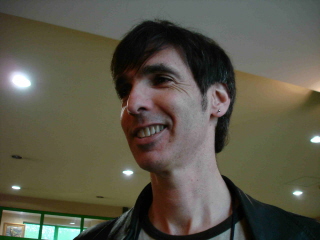 Paul Cherashore
Day 3
The hump is on and we're sliding towards the finish of the conferenceâ¦..
Today there was an ibogaine session that was unconnected to the main conference for which I had agreed to provide opening remarks. My interest in ibogaine goes back about 17 years to the Lower East Side in New York and really doesn't seem to move out of the neighborhood. There was a guy called Fred Gotbetter who participated in the Lower East Side Needle Exchange Program. He was a fixture - smart, good company and often annoying as he made demands that were either not realistic, totally doable but I didn't want to support or things we should be doing but had refused to do. He was frequently right and frequently wrong. However he did talk about ibogaine and how great it worked for eliminating withdrawal from drugs and he touted it as a cure. However he had taken it 6 times and was still a mess. However there was usually something to what Fred said. Others thought so too and so ICARE, the Lower East Side user group, invited Howard Lotsof to attend one of its meetings and let more people know about ibogaine. Howard is generally credited with the African alkaloid's discovery as an addiction interrupter and for bringing it back to the States. Howard explained that treatments were available but one had to travel to Holland and a treatment cost $20,000. Thus endeth that.
A few years later, Dana Beal (see travel section of this blog) randomly added me to cc list on a ranting e-mail. Another cc was a guy called Patrick Kroupa who was another LESNEP participant and knew me back in the day. He lives in Miami and had used ibogaine and now worked on off shore trials of the drug. We got together and he explained his journey. Not long after, Dana showed up in HRC's office with Dimitri Mugianis in tow. Again I hadn't seen Dimitri for many years but if you check out HRC's heroin brochure, he's the guy chasing the dragon and I was the photographer. Again he'd used ibogaine and it had worked for him too.
What intrigues me now is that underground ibogaine treatments are taking place in the USA now. Folks realized that to bring attention to the efficacy of ibogaine it needed a core of successful patients who had been treated locally. Which brings us pretty much up to date. I was the opening speaker and after my remarks I headed back to the main conference.
Unfortunately the plenary presentation I was looking forward to "The History of Collaboration between Drug Users, PLWHAs, gay men and women around HIV/AIDS" by Gregg Gonsalves had already occurred. Gregg's a longtime AIDS activist who moved to South Africa and is now causing waves down there. He always has something sensible to say and as we talked in the corridor after his presentation it seems he'd laid into the conference organizers for failing to meet the needs of drug users. Always causing trouble is Gregg.
The afternoon drug user involvement panel was disappointing. But HRC's Hilary McQuie proved herself to be an excellent host during a Living Room session as she talked about the federal ban on the funding of needle exchange. However there was only one thing on my mind at that moment. Luciano Colonna and myself were excited about visiting the urinetherapy center next door to the hotel. The "Source of Life" urinetherapy center is one of a set of centers located in this part of Warsaw known for its waters. Visitors are shown to a pretty solarium and a menu of "teas" is brought to each table. Admittedly we were not very brave and passed over the bull juice and the 10 year old fermented banker water and ultimately plumped to self-serve and after a visit to the bathroom to fill the teapot we returned to the solarium. Our teapots were infused with fine herbs and returned to us. Surprisingly invigorating and refreshing we prepared for the evening's party with a massage of a special butter made from the urine of former KGB officers. An excellent way to round off the afternoon.
One thing the conference has always delivered on is an end of conference party. This year the event was held at an old factory somewhere on the edge of town. The main attraction was the Harm Reduction Allstars a band made up of er self-styled harm reduction all stars. And if one enjoys sixties soul and 12 bar blues, they were a lot of fun.
Paul Cherashore
Day 3
The hump is on and we're sliding towards the finish of the conferenceâ¦..
Today there was an ibogaine session that was unconnected to the main conference for which I had agreed to provide opening remarks. My interest in ibogaine goes back about 17 years to the Lower East Side in New York and really doesn't seem to move out of the neighborhood. There was a guy called Fred Gotbetter who participated in the Lower East Side Needle Exchange Program. He was a fixture - smart, good company and often annoying as he made demands that were either not realistic, totally doable but I didn't want to support or things we should be doing but had refused to do. He was frequently right and frequently wrong. However he did talk about ibogaine and how great it worked for eliminating withdrawal from drugs and he touted it as a cure. However he had taken it 6 times and was still a mess. However there was usually something to what Fred said. Others thought so too and so ICARE, the Lower East Side user group, invited Howard Lotsof to attend one of its meetings and let more people know about ibogaine. Howard is generally credited with the African alkaloid's discovery as an addiction interrupter and for bringing it back to the States. Howard explained that treatments were available but one had to travel to Holland and a treatment cost $20,000. Thus endeth that.
A few years later, Dana Beal (see travel section of this blog) randomly added me to cc list on a ranting e-mail. Another cc was a guy called Patrick Kroupa who was another LESNEP participant and knew me back in the day. He lives in Miami and had used ibogaine and now worked on off shore trials of the drug. We got together and he explained his journey. Not long after, Dana showed up in HRC's office with Dimitri Mugianis in tow. Again I hadn't seen Dimitri for many years but if you check out HRC's heroin brochure, he's the guy chasing the dragon and I was the photographer. Again he'd used ibogaine and it had worked for him too.
What intrigues me now is that underground ibogaine treatments are taking place in the USA now. Folks realized that to bring attention to the efficacy of ibogaine it needed a core of successful patients who had been treated locally. Which brings us pretty much up to date. I was the opening speaker and after my remarks I headed back to the main conference.
Unfortunately the plenary presentation I was looking forward to "The History of Collaboration between Drug Users, PLWHAs, gay men and women around HIV/AIDS" by Gregg Gonsalves had already occurred. Gregg's a longtime AIDS activist who moved to South Africa and is now causing waves down there. He always has something sensible to say and as we talked in the corridor after his presentation it seems he'd laid into the conference organizers for failing to meet the needs of drug users. Always causing trouble is Gregg.
The afternoon drug user involvement panel was disappointing. But HRC's Hilary McQuie proved herself to be an excellent host during a Living Room session as she talked about the federal ban on the funding of needle exchange. However there was only one thing on my mind at that moment. Luciano Colonna and myself were excited about visiting the urinetherapy center next door to the hotel. The "Source of Life" urinetherapy center is one of a set of centers located in this part of Warsaw known for its waters. Visitors are shown to a pretty solarium and a menu of "teas" is brought to each table. Admittedly we were not very brave and passed over the bull juice and the 10 year old fermented banker water and ultimately plumped to self-serve and after a visit to the bathroom to fill the teapot we returned to the solarium. Our teapots were infused with fine herbs and returned to us. Surprisingly invigorating and refreshing we prepared for the evening's party with a massage of a special butter made from the urine of former KGB officers. An excellent way to round off the afternoon.
One thing the conference has always delivered on is an end of conference party. This year the event was held at an old factory somewhere on the edge of town. The main attraction was the Harm Reduction Allstars a band made up of er self-styled harm reduction all stars. And if one enjoys sixties soul and 12 bar blues, they were a lot of fun.
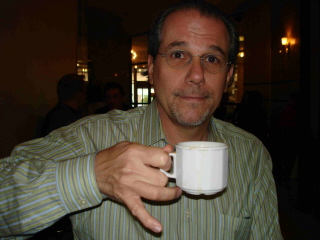 Luciano Colonna
Luciano Colonna
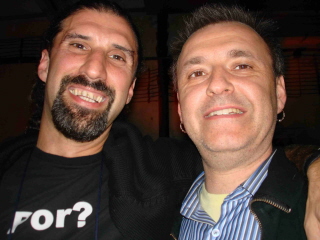 Pablo Cymerman & Allan Clear at the party
Pablo Cymerman & Allan Clear at the party
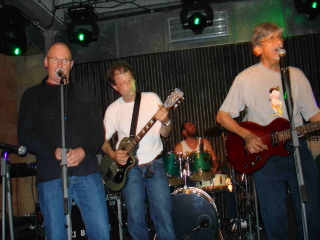 The Harm Reduction Allstars -- Patric O'Hare, Franz Trautmann & Jimmy Dorabchee
The Harm Reduction Allstars -- Patric O'Hare, Franz Trautmann & Jimmy Dorabchee
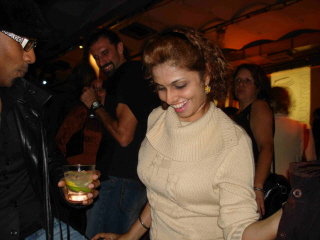 Sangeeta Sran & Palani Nararayan at the party
Sangeeta Sran & Palani Nararayan at the party
 Paul Cherashore
Day 3
The hump is on and we're sliding towards the finish of the conferenceâ¦..
Today there was an ibogaine session that was unconnected to the main conference for which I had agreed to provide opening remarks. My interest in ibogaine goes back about 17 years to the Lower East Side in New York and really doesn't seem to move out of the neighborhood. There was a guy called Fred Gotbetter who participated in the Lower East Side Needle Exchange Program. He was a fixture - smart, good company and often annoying as he made demands that were either not realistic, totally doable but I didn't want to support or things we should be doing but had refused to do. He was frequently right and frequently wrong. However he did talk about ibogaine and how great it worked for eliminating withdrawal from drugs and he touted it as a cure. However he had taken it 6 times and was still a mess. However there was usually something to what Fred said. Others thought so too and so ICARE, the Lower East Side user group, invited Howard Lotsof to attend one of its meetings and let more people know about ibogaine. Howard is generally credited with the African alkaloid's discovery as an addiction interrupter and for bringing it back to the States. Howard explained that treatments were available but one had to travel to Holland and a treatment cost $20,000. Thus endeth that.
A few years later, Dana Beal (see travel section of this blog) randomly added me to cc list on a ranting e-mail. Another cc was a guy called Patrick Kroupa who was another LESNEP participant and knew me back in the day. He lives in Miami and had used ibogaine and now worked on off shore trials of the drug. We got together and he explained his journey. Not long after, Dana showed up in HRC's office with Dimitri Mugianis in tow. Again I hadn't seen Dimitri for many years but if you check out HRC's heroin brochure, he's the guy chasing the dragon and I was the photographer. Again he'd used ibogaine and it had worked for him too.
What intrigues me now is that underground ibogaine treatments are taking place in the USA now. Folks realized that to bring attention to the efficacy of ibogaine it needed a core of successful patients who had been treated locally. Which brings us pretty much up to date. I was the opening speaker and after my remarks I headed back to the main conference.
Unfortunately the plenary presentation I was looking forward to "The History of Collaboration between Drug Users, PLWHAs, gay men and women around HIV/AIDS" by Gregg Gonsalves had already occurred. Gregg's a longtime AIDS activist who moved to South Africa and is now causing waves down there. He always has something sensible to say and as we talked in the corridor after his presentation it seems he'd laid into the conference organizers for failing to meet the needs of drug users. Always causing trouble is Gregg.
The afternoon drug user involvement panel was disappointing. But HRC's Hilary McQuie proved herself to be an excellent host during a Living Room session as she talked about the federal ban on the funding of needle exchange. However there was only one thing on my mind at that moment. Luciano Colonna and myself were excited about visiting the urinetherapy center next door to the hotel. The "Source of Life" urinetherapy center is one of a set of centers located in this part of Warsaw known for its waters. Visitors are shown to a pretty solarium and a menu of "teas" is brought to each table. Admittedly we were not very brave and passed over the bull juice and the 10 year old fermented banker water and ultimately plumped to self-serve and after a visit to the bathroom to fill the teapot we returned to the solarium. Our teapots were infused with fine herbs and returned to us. Surprisingly invigorating and refreshing we prepared for the evening's party with a massage of a special butter made from the urine of former KGB officers. An excellent way to round off the afternoon.
One thing the conference has always delivered on is an end of conference party. This year the event was held at an old factory somewhere on the edge of town. The main attraction was the Harm Reduction Allstars a band made up of er self-styled harm reduction all stars. And if one enjoys sixties soul and 12 bar blues, they were a lot of fun.
Paul Cherashore
Day 3
The hump is on and we're sliding towards the finish of the conferenceâ¦..
Today there was an ibogaine session that was unconnected to the main conference for which I had agreed to provide opening remarks. My interest in ibogaine goes back about 17 years to the Lower East Side in New York and really doesn't seem to move out of the neighborhood. There was a guy called Fred Gotbetter who participated in the Lower East Side Needle Exchange Program. He was a fixture - smart, good company and often annoying as he made demands that were either not realistic, totally doable but I didn't want to support or things we should be doing but had refused to do. He was frequently right and frequently wrong. However he did talk about ibogaine and how great it worked for eliminating withdrawal from drugs and he touted it as a cure. However he had taken it 6 times and was still a mess. However there was usually something to what Fred said. Others thought so too and so ICARE, the Lower East Side user group, invited Howard Lotsof to attend one of its meetings and let more people know about ibogaine. Howard is generally credited with the African alkaloid's discovery as an addiction interrupter and for bringing it back to the States. Howard explained that treatments were available but one had to travel to Holland and a treatment cost $20,000. Thus endeth that.
A few years later, Dana Beal (see travel section of this blog) randomly added me to cc list on a ranting e-mail. Another cc was a guy called Patrick Kroupa who was another LESNEP participant and knew me back in the day. He lives in Miami and had used ibogaine and now worked on off shore trials of the drug. We got together and he explained his journey. Not long after, Dana showed up in HRC's office with Dimitri Mugianis in tow. Again I hadn't seen Dimitri for many years but if you check out HRC's heroin brochure, he's the guy chasing the dragon and I was the photographer. Again he'd used ibogaine and it had worked for him too.
What intrigues me now is that underground ibogaine treatments are taking place in the USA now. Folks realized that to bring attention to the efficacy of ibogaine it needed a core of successful patients who had been treated locally. Which brings us pretty much up to date. I was the opening speaker and after my remarks I headed back to the main conference.
Unfortunately the plenary presentation I was looking forward to "The History of Collaboration between Drug Users, PLWHAs, gay men and women around HIV/AIDS" by Gregg Gonsalves had already occurred. Gregg's a longtime AIDS activist who moved to South Africa and is now causing waves down there. He always has something sensible to say and as we talked in the corridor after his presentation it seems he'd laid into the conference organizers for failing to meet the needs of drug users. Always causing trouble is Gregg.
The afternoon drug user involvement panel was disappointing. But HRC's Hilary McQuie proved herself to be an excellent host during a Living Room session as she talked about the federal ban on the funding of needle exchange. However there was only one thing on my mind at that moment. Luciano Colonna and myself were excited about visiting the urinetherapy center next door to the hotel. The "Source of Life" urinetherapy center is one of a set of centers located in this part of Warsaw known for its waters. Visitors are shown to a pretty solarium and a menu of "teas" is brought to each table. Admittedly we were not very brave and passed over the bull juice and the 10 year old fermented banker water and ultimately plumped to self-serve and after a visit to the bathroom to fill the teapot we returned to the solarium. Our teapots were infused with fine herbs and returned to us. Surprisingly invigorating and refreshing we prepared for the evening's party with a massage of a special butter made from the urine of former KGB officers. An excellent way to round off the afternoon.
One thing the conference has always delivered on is an end of conference party. This year the event was held at an old factory somewhere on the edge of town. The main attraction was the Harm Reduction Allstars a band made up of er self-styled harm reduction all stars. And if one enjoys sixties soul and 12 bar blues, they were a lot of fun.
 Luciano Colonna
Luciano Colonna
 Pablo Cymerman & Allan Clear at the party
Pablo Cymerman & Allan Clear at the party
 The Harm Reduction Allstars -- Patric O'Hare, Franz Trautmann & Jimmy Dorabchee
The Harm Reduction Allstars -- Patric O'Hare, Franz Trautmann & Jimmy Dorabchee
 Sangeeta Sran & Palani Nararayan at the party
Sangeeta Sran & Palani Nararayan at the partyThis work by StoptheDrugWar.org is licensed under Creative Commons Attribution-ShareAlike 4.0 International
Add new comment